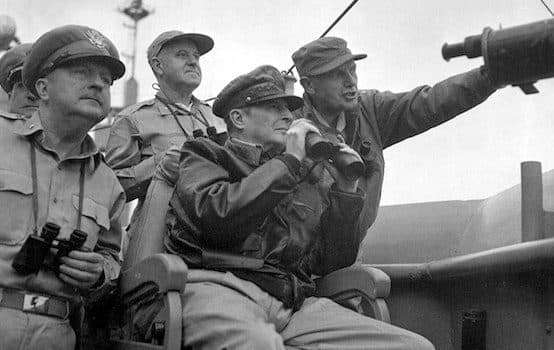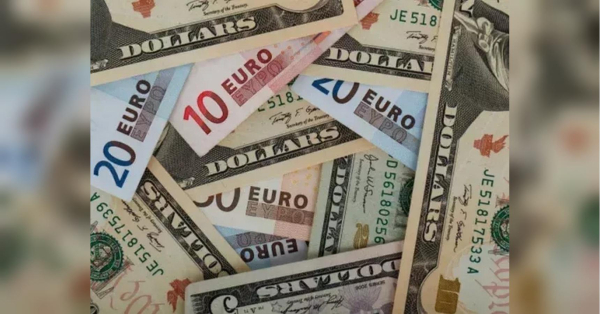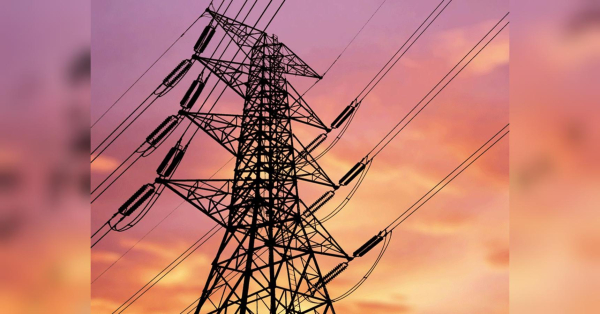
On Monday night, with a televised handshake and a few kind words, the Korean War was effectively ended, almost exactly 68 years after it began. As President Trump said in Singapore, “We will have a terrific relationship ahead.”
For his part, North Korean leader Kim said that while “obstacles” had been in the way of the meeting, “we overcame all of them and we are here today.” And while Tuesday’s joint statement on de-nuclearization can be regarded as tentative, even vaporous, the two leaders also agreed to work toward establishing diplomatic relations. In addition, Trump has stated his desire to remove U.S. troops from South Korea eventually; these moves all amount to a massive global game-change.
Indeed, the contrast between the warmth in Singapore to the chill at the recent G-7 meeting in Quebec is startling; it truly seems that an old era is finally ending and a new era, for better or worse, is beginning.
So it’s almost poetically fitting that the focus is on Korea. Looking back, it’s hard to overstate the impact of the Korean War on the history of the last seven decades; that conflict was the decisive inflection point in the onset of the Cold War. It solidified much of the geopolitical architecture of the Cold War, notably the fundamental idea of a U.S.-led Free World alliance to contain communism. And if there aren’t many communists around today, well, that’s a clue as to the current dilemma of the once strong, now-faltering, anti-communist alliance.
- The G-7 Debacle and the Summit in Singapore
- What if the Trump-Moon-Kim Summit Fails?
To gain better perspective, we might pause over some of that early Cold War history. As we know, the U.S. and the Soviet Union had been allies in the defeat of Nazi Germany and also, at the tail end of World War Two, Japan. And so after 1945, there was considerable hope, at least on the U.S. side, that the great powers of the world, operating as “policemen” on behalf of the new United Nations, would cooperate to uphold world security.
In light of Stalin’s true intentions, such hopes must now be remembered as dangerously naive. Yet it was a naivety that died hard. Yes, as an early indicator of mistrust, the U.S. granted aid to anti-communist governments in Greece and Turkey in 1947. And yes, the U.S. undertook the Berlin airlift in 1948. And yes, NATO was created in 1949, although in its inception, it was mostly a political, as opposed to military, alliance. And the huge Marshall Plan was portrayed as entirely humanitarian economic foreign aid. In other words, in the late 40s, hope for post-war harmony still abounded. That’s why, even after the big post-WW2 demobilization of 1945-6, we continued, for the rest of the decade, to shrink defense spending; during the fiscal years 1947 to 1950, the U.S. defense budget shrank by yet another 40 percent.
It was the Korean War that shocked the U.S. out of its complacent military torpor. On June 25, 1950, North Korea invaded South Korea. Within days, President Truman ordered help rushed to the South, only to discover that our armed forces, which had defeated the Axis just five years earlier, were pitifully unfit to fight even the North Koreans; it was obvious to the world that Uncle Sam was in a saggy defense posture. America recovered soon enough, and yet then Red China joined the fighting, and it soon became obvious that Soviet forces, too, were deeply involved. In other words, we really were in a war, not just with North Korea, but with the international communist conspiracy.
Thus the last wisps of illusion about the Soviets, and the Reds overall, faded away. Truman fired his incumbent defense secretary, Louis Johnson, bringing a revered hero of an earlier hot war, George C. Marshall, back from retirement to run the Pentagon. Unsurprisingly, the defense budget zoomed, increasing by ten-fold, to nearly 15 percent of GDP. As Secretary of State Dean Acheson said at the time, “The profound lesson of Korea is that, contrary to every action preceding, the USSR took a step which risked—however remotely—general war.” And so the U.S. muscled up everywhere; we sent more troops, for instance, to fortify NATO.
Over the three years of the Korean War, 33,686 Americans were killed in combat, as well as millions of Koreans and nearly a million Chinese “volunteers.” And since it was merely an armistice that was signed on July 27, 1953, the technical state of war continued. (In fact, there was plenty of violence in the decades thereafter, as the North Koreans went about murdering GI’s in the DMZ, shooting down a reconnaissance airplane, even capturing a U.S. Navy ship on the high seas. And, of course, as recently as last year, the U.S. and North Korea were trading the direst possible threats.)
So we can see: For the entire existence of most people living today, Korean tensions have been a running sore of stubborn hostility. And that hostility helped perpetuate the Cold War arrangements of NATO, and later, the G-7, and all the other American-sponsored geopolitical mechanisms of the Cold War. These included, we might note, the idea that the U.S. should keep open, on a non-reciprocal basis, its domestic market for imports from Europe, Japan, and, yes, South Korea; such one-sided trade relationships were seen as a necessary component of the alliance-building process.
Interestingly, all of this structure survived the collapse of the Soviet Union; in the 90s, many argued that it was time for a military drawdown and an economic rethink. Yet in fact, the opposite happened; in the wake of the Soviet collapse—which was, of course, the ultimate proof of the wisdom of the Trumanesque policy architecture—the West doubled down on more of the same, despite the fact that everything in the world had changed. NATO actually expanded, as did trade with countries such as China, by now a capitalist country with communist characteristics.
So now, in 2018, we come to a huge hinge question: What happens to the Cold War order when Korean hostility—the last vestige of the Cold War—goes away? To be sure, there’s no guarantee that the Trump-Kim entente will last, and yet still, if hostilities were ever to break out again, it’s likely that any such conflict would be seen as a second Korean War.
Yet in the meantime, in this moment of amicability, the U.S. is still dealing with, and paying for, the relics of the Cold War. And most foreign-policy mandarins, here and around the world, see those relics as still vital.
Yet, as we are seeing on worldwide TV, the President of the United States disagrees. He seems more comfortable dealing with the leader of North Korea than with the leaders of, say, Canada and Germany. To put it mildly, this shift is causing great consternation in the establishment; in the words of Senate Foreign Relations Committee Chairman Bob Corker, “It just seems like the President loves infuriating our friends and and befriending folks who have been our sort of natural opposition.” (And of course, some well-placed observers are willing to put their criticism in even starker terms.)
It’s worth recalling that Trump has been consistent in his opposition to the Cold War order for decades; since the 1980s, he has argued that our allies are playing us for suckers. That is, they are taking our money for their defense, and then taking more of our money as a result of lopsided trade relationships. Of course, all these assertions are fiercely debated and disputed, and yet it’s simply a fact, for example, that the U.S. spends multiples more on defense, as a percentage of GDP, than other NATO members. And it’s a fact, too, that the U.S. runs a trade deficit with the European Union of about $100 billion.
Thus in this time of populist ferment, the defenders of the status quo are thrown on the defensive. Establishmentarians must explain why the U.S. should always subsidize and protect countries and peoples on the many far pavilions, from South Korea to Estonia to Syria. We have known for three decades now that we’re not defending, any more, against communist ideology; instead, it sometimes appears that we are merely fostering a disastrous worldwide technology transfer to China.
So if we step back, we can see the ahistoricality of what we’re doing. Even the advocates of the status quo system have to admit that in the context of traditional statecraft, it’s simply not normal that one country should do all this defending, and oftentimes pay for the privilege of doing it. Thus the pressing question: With just four percent of the world’s population and barely more than a fifth of the world’s GDP, can the U.S. really afford to defend, seemingly, everyone against everybody? Indeed, in a world of drones, cyber-attacks, and migration-based terrorism, it’s not even clear that we know how to defend ourselves, let alone the rest of the world.
To be sure, many will argue that even if it’s not normal, and increasingly unworkable, that we bear these burdens, it’s still desirable, as part of a quest to build a newer world order. Thus the political battle is joined: Trump the nationalist, plus his Bannonite allies around the world vs. the received—some would say, congealed—wisdom of the internationalists.
So now we might ask: Does Trump have any sort of road map in mind? What is his vision? It would seem that he envisions a more autonomous—or perhaps, autarkic—U.S., protected against too many imports and too many immigrants. If we have our own sovereignty, our own internal market, and our own energy, then, Trump seems to think, the main thing is to keep it all intact, and not go the way of Western Europe.
In fact, it’s possible to espy at least the first glimmers of an articulated Trump Doctrine. As a further poetic coda to the final passing of the Cold War era, just on Monday an article appeared in The Atlantic, under the byline of Jeffrey Goldberg, a well-known foreign policy mandarin. Goldberg quoted one “senior official” in the White House saying that yes, indeed, there is a new line emerging: “The Trump Doctrine is ‘We’re America, Bitch.’ That’s the Trump Doctrine.” And for good measure, and a second “senior official” told Goldberg the same thing, using virtually the same language.
Not surprisingly, Goldberg is unimpressed, even horrified by these pronouncements; he scorns the phraseology as “delusional,” decrying “the gangster fronting, the casual misogyny, the insupportable confidence,” adding that it is “self-isolating and self-sabotaging.”
Of course, such harsh words sum up the establishment’s longstanding take on Trump himself, to say nothing of any new doctrine. And yet in the wake of these latest words, it’s a cinch that the white-hot heat of the foreign-policy debate will grow even hotter, up to the limits of what’s physically possible, as Trump critics take turns pounding on the unnamed aides (who will likely be named soon enough). In the meantime, Trump supporters will be scramble to express America First ideas using more conventional locutions.
The stakes are, after all, high; the basic geopolitical foundations of the last seven decades are being challenged and shifted—or, as critics would prefer to say, being subverted and betrayed.
Yet in the meantime, even as his myriad foes prepare their next political, legal, and punditical attacks, Trump is the man astride the world stage, smiling, shaking hands, signing deals—and unmistakably remaking the old order.
James P. Pinkerton is an author and contributing editor at TAC. He served as a White House policy aide to both Presidents Ronald Reagan and George H.W. Bush.
Sourse: theamericanconservative.com






